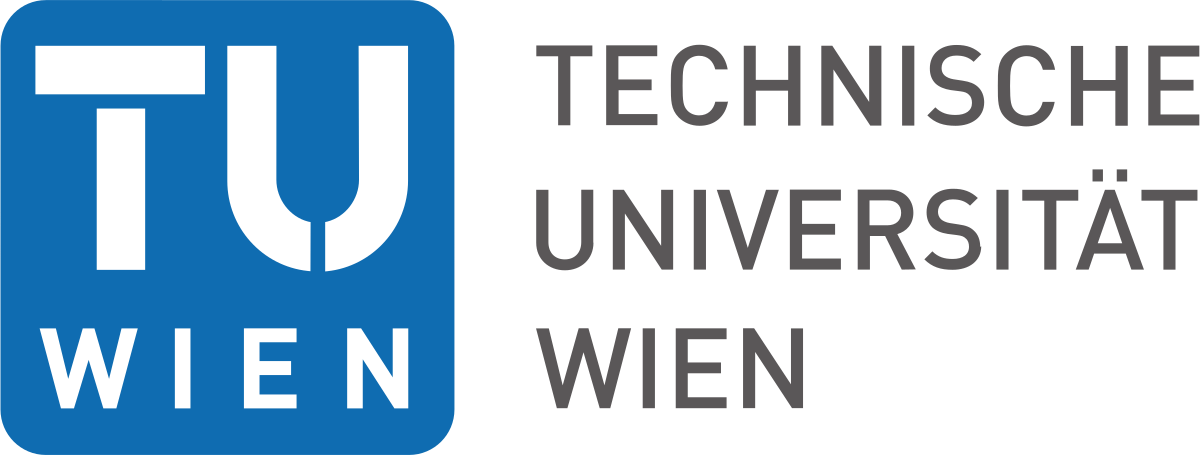




|

|

|

|
|
Seminar "Selected Topics in Mathematics"
Online edition
|
| Past talks: |
| 08 February 2023 (Wednesday, 4pm UTC) |
|
Prof. Andy Hone,
University of Kent
Continued fractions from hyperelliptic curves ( Video link) Abstract. We consider a family of nonlinear maps that are generated from the continued fraction expansion of a function on a hyperelliptic curve of genus \(g\), as originally described by van der Poorten. Using the connection with the classical theory of \(J\)-fractions and orthogonal polynomials, we show that in the simplest case \(g=1\) this provides a straightforward derivation of Hankel determinant formulae for the terms of a general Somos-\(4\) sequence, which were found in particular cases by Chang, Hu, and Xin. We extend these formulae to the higher genus case, and prove that generic Hankel determinants in genus \(2\) satisfy a Somos-\(8\) relation. Moreover, for all \(g\) we show that the iteration for the continued fraction expansion is equivalent to a discrete Lax pair with a natural Poisson structure, and the associated nonlinear map is a discrete integrable system, connected with solutions of the infinite Toda lattice. If time permits, we will also mention the link to (Stieltjes) \(S\)-fractions via contraction, and a family of maps associated with the Volterra lattice, described in current joint work with John Roberts and Pol Vanhaecke.
|
| 01 March 2023 (Wednesday, 4pm UTC) |
|
Prof. Iskander Aliev,
Cardiff University
Sparse integer points in rational polyhedra: bounds for the integer Caratheodory rank ( Video link) Abstract. We will give an overview of the recent results on sparse integer points (that is, the integer points with a relatively large number of zero coordinates) in the rational polyhedra of the form \(\{x: Ax=b, x\geq 0\}\), where \(A\) is an integer matrix, and \(b\) is an integer vector. In particular, we will discuss the bounds on the Integer Caratheodory rank in various settings and proximity/sparsity transference results.
|
| 08 March 2023 (Wednesday, 4pm UTC) |
|
Prof. Nikolay Moshchevitin,
Israel Institute of Technology (Technion)
Geometry of Diophantine Approximation ( Video link) We discuss some classical and modern results related to the geometry of Diophantine Approximation, in particular some multidimensional generalizations of continued fractions algorithm related to patterns of the best approximations. Important tools for the study of the properties of approximations are related to irrationality measure functions. We will give a brief introduction into the theory and explain a recent conjecture by Schmidt and Summerer and its solution.
|
| 15 March 2023 (Wednesday, 4pm UTC) |
|
Prof. Robert Connelly,
Cornell University
Global Rigidity of Braced Convex Polygons ( Video link) A framework in the plane is globally rigid if any other realization of the framework with corresponding edges the same length is congruent. For example, a collection of triangles placed end-to-end without overlap such that a bar connecting the first triangle to the last, intersecting the interior of each triangle, is globally rigid. We would like to tell when a convex polygon with braces inside connecting the vertices so that for \(n\) vertices there are \(n-2\) internal braces, then this framework is always globally rigid. But we can't do that yet. However, we have some interesting classes of braced convex polygonal frameworks that are always globally rigid. This is joint work with Bob Connelly, Bill Jackson, Shin-ichi Tanagawa, and Albert Zhen
|
| 22 March 2023 (Wednesday, 4pm UTC) |
|
Prof. Thomas Garrity,
Williams College
On Partition Numbers and Multi-dimensional Continued Fractions ( Slides) ( Video link) Abstract. This talk will link partition numbers from combinatorics with a certain multi-dimensional continued fraction algorithm from number theory and dynamical systems. Andrew and Eriksson's Introduction to Integer Partitions starts with discussing Euler's identity, ''Every number has as many integer partitions into odd parts as into distinct parts.'' As they state, this is quite surprising if you have never seen it before. There are, though, many other equally if not more surprising partition identities. For all there are two basic questions. First, how to even guess the existence of any potential partition identities. Then, once a possible potential identity is conjectured, how to prove it. In joint work with Bonanno, Del Vigna and Isola, there was developed a link between traditional continued fractions and the slow triangle map (a type of multi-dimensional continued fraction algorithm) with integer partitions of numbers into two or three distinct parts, with multiplicity. These maps were initially introduced for number theoretic reasons but have over the years exhibited many interesting dynamical properties. In work with Wael Baalbaki, we will see that the slow triangle map, when extended to higher dimensions, will provide a natural map (an almost internal symmetry) from the set of integer partitions to itself. Thus we will allow us to create a new technique for generating any number of partition identities. |
| 29 March 2023 (Wednesday, 4pm UTC+01:00) |
|
Prof. Pavel Tumarkin,
Durham University
( Video link)
Farey graph and ideal tetrahedra Abstract. We construct a 3-dimensional analog of the Farey tesselation and show that it inherits many properties of the usual 2-dimensional Farey graph. As a by-product, we get a 3-dimensional counterpart of the Ptolemy relation. The talk is based on an ongoing work joint with Anna Felikson, Oleg Karpenkov and Khrystyna Serhiyenko.
|
| 05 April 2023 (Wednesday, 4pm UTC+01:00) |
|
Prof. Egon Schulte,
Northeastern University
( Video link)
Skeletal Polyhedral Geometry and Symmetry The study of highly symmetric structures in Euclidean \(3\)-space has a long and fascinating history tracing back to the early days of geometry. With the passage of time, various notions of polyhedral structures have attracted attention and have brought to light new exciting figures intimately related to finite or infinite groups of isometries. A radically different, skeletal approach to polyhedra was pioneered by Grunbaum in the 1970's building on Coxeter's work. A polyhedron is viewed not as a solid but rather as a finite or infinite periodic geometric edge graph in space equipped with additional polyhedral super-structure imposed by the faces. Since the mid 1970's there has been a lot of activity in this area. Much work has focused on classifying skeletal polyhedra and complexes by symmetry, with the degree of symmetry defined via distinguished transitivity properties of the geometric symmetry groups. These skeletal figures exhibit fascinating geometric, combinatorial, and algebraic properties and include many new finite and infinite structures.
|
| 12 April 2023 (Wednesday, 4pm UTC+01:00) |
|
Prof. Valérie Berthé,
IRIF
( Video link)
Balanced words and symbolic dynamical systems Abstract. The chairman assignment problem can be stated as follows: \(k\) states are assumed to form a union and each year a union chairman must be selected so that at any time the cumulative number of chairmen of each state is proportional to its weight. It is closely related to the (discrete) apportionment problem, which has its origins in the question of allocating seats in the house of representatives in the United States, in a proportional way to the population of each state. The richness of this problem lies in the fact that it can be reformulated both as a sequencing problem in operations research for optimal routing and scheduling, and as a symbolic discrepancy problem, in the field of word combinatorics, where the discrepancy measures the difference between the number of occurrences of a letter in a prefix of an infinite word and the expected value in terms of frequency of occurrence of this letter. We will see in this lecture how to construct infinite words with values in a finite alphabet having the smallest possible discrepancy, by revisiting a construction due to R. Tijdeman in terms of dynamical systems.
|
| 19 April 2023 (Wednesday, 4pm UTC+01:00) |
|
Prof. Jörg Thuswaldner,
Montanuniversität Leoben
( Video link)
Multidimensional continued fractions and symbolic codings of toral translations The aim of this lecture is to find symbolic codings for translations on the \(d\)-dimensional torus that enjoy many of the well-known properties of Sturmian sequences (like low complexity, balance of factors, bounded remainder sets of any scale). Inspired by the approach of G. Rauzy we construct such codings by the use of multidimensional continued fraction algorithms that are realized by sequences of substitutions. This is joint work with V. Berthé and W. Steiner.
|
| 26 April 2023 (Wednesday, 4pm UTC+01:00) |
|
Nathan Uricchio,
WPI
Observations of matroid circuit duality as a powerset operator ( Video link) A matroid generalizes the notion of linear independence in vector spaces. Similar to the orthogonal complement of a vector space, the orthogonal complement of a matroid \(M\) is also well-defined and results in another matroid. This new matroid is more commonly referred to as the dual matroid and denoted with \(M^*\). There is an interesting relation between the circuits of a matroid \(M\) and the cocircuits of \(M\) (the circuits of its dual matroid \(M^*\)) which aligns closely to the orthogonal complement of a vector space. We expand on this relation to define a powerset operator, which we call circuit duality, that can be applied to non-matroidial collections. Unlike the vector space orthogonal complement operator, this circuit duality operator may not behave as nicely when applied to collections that do not correspond to a matroid. This talk is an investigation into the development of tools and additional operators to help us understand when a collection of sets results in a matroid under one or more applications of the circuit duality operator.
|
| 10 May 2023 (Wednesday, 4pm UTC+01:00) |
|
Prof. Michael Gekhtman,
University of Notre Dame
Unified approach to exotic cluster structures in simple Lie groups ( Video link) We present a construction for cluster charts in simple Lie groups compatible with Poisson structures in the Belavin-Drinfeld classification. The key ingredient is a birational Poisson map from the group to itself that transform a Poisson bracket associated with a nontrivial Belavin-Drinfeld data into the standard one. It allows us to obtain a cluster chart as a pull-back of the Berenstein-Fomin-Zelevinsky cluster coordinates on the open double Bruhat cell. This is a joint work with M. Shapiro and A. Vainshtein.
|
| 29 July 2023 (Saturday, 3pm UTC+01:00) |
|
Prof. Mikhail Skopenkov,
King Abdullah University of Science and Technology
Flexible meshes in isotropic geometry ( Video link) Abstract. We study flexible meshes in isotropic geometry. This geometry has a degenerate metric, but there is a natural notion of flexibility. Using duality, one can define it in a particularly simple way: a mesh (or better the dual mesh) is flexible if contained in a family of parallel meshes with the same areas of corresponding faces. We classify all flexible 2\(\times\)2 meshes; this case corresponds to Kokotsakis meshes by duality. We show that there are just two classes of flexible meshes in isotropic geometry, in contrast to rather involved I. Izmestiev's classification in Euclidean geometry. Our proof uses elementary algebraic geometry of pencils of quadrics. This is joint work with Helmut Pottmann and Olimjoni Pirahmad.
|
| Go to the main page. |